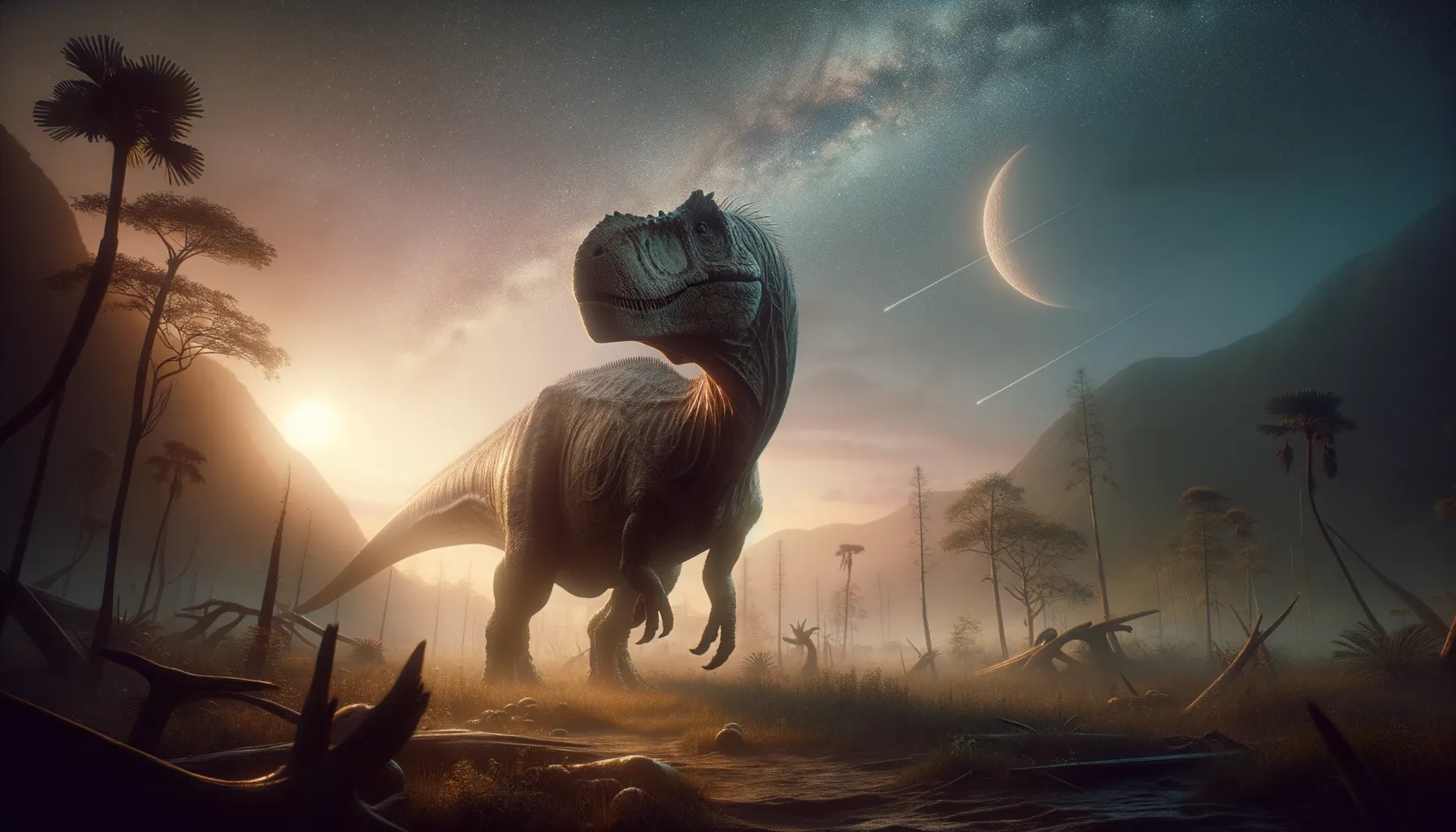
Actiosaurus
Not your typical prehistoric mystery!
Period
Information not available.
Length
Information not available.
Height
Information not available.
Weight
Information not available.
Actiosaurus is a little-known genus of prehistoric creatures about which very little is known. Due to the scarcity of fossil evidence, scientists are still debating its classification and characteristics. As the name suggests, it was initially believed to be a dinosaur, but details remain largely speculative. Continued research may one day shed light on its place in the prehistoric world and clarify its evolutionary significance.
Diet
Information about its diet is currently not available.
Hunting
Hunting behavior has not been documented for this species.
Environmental challenges
The environmental challenges faced by Actiosaurus are still a topic of research. Due to limited fossil evidence, scientists are unsure about the specific conditions it adapted to. Understanding its habitat may eventually clarify the challenges it faced. Ongoing discoveries might offer more clues about the ecosystems it inhabited.
Speed
Information not available.
Lifespan
Information not available.
First discovery
Information not available.
Fun Facts
- Actiosaurus is known from fossils discovered in Europe, particularly in France.
- The name Actiosaurus means 'Ray Lizard' as it was initially thought to resemble a type of ray-finned fish.
- Despite its name, Actiosaurus is actually a marine reptile, not a dinosaur.
- The creature lived during the Late Triassic period, approximately 210 million years ago.
- It is believed that Actiosaurus had a slender, elongated body adapted for swimming, like present-day eels.
- Actiosaurus is part of a group known as thalattosaurs, marine reptiles that thrived in ancient oceans.
Growth and Development
Growth and development patterns of Actiosaurus remain largely unknown. Due to limited fossil records, it is difficult for paleontologists to establish a clear picture of its life stages. Further discoveries might shed light on how it matured over its lifespan. Insights into its development could help clarify its evolutionary position.
Habitat
The exact habitat of Actiosaurus is yet to be identified with certainty. Fossil evidence is currently sparse, making it difficult to pinpoint its environmental preferences. Researchers continue to search for more fossils to better understand its ecological niche. With more data, its habitat might become clearer in future studies.
Interaction with other species
There is little information about how Actiosaurus interacted with other species due to the limited fossil evidence. Further discoveries could provide insights into potential predator-prey relationships or symbiotic interactions. Understanding its interactions would help clarify its ecological role.
Natural lifespan
Information about its natural lifespan is currently unknown.
Reproduction
Not much is known about the reproductive behavior of Actiosaurus. Without concrete fossil examples, scientists have difficulty drawing conclusions. Future findings may help elucidate its reproductive strategies. Such insights could clarify how it fits into the evolutionary history.
Social behaviour
There is currently no information available on the social behavior of Actiosaurus. Researchers have been unable to make definite conclusions from existing fossils. Future fossil discoveries may provide clues about its social patterns.
Fossil locations
Fossils attributed to Actiosaurus are extremely rare and have been found in limited locations. Ongoing excavations focus on uncovering more specimens to gain a better understanding. These findings may help identify new sites where Actiosaurus fossils might be present.
